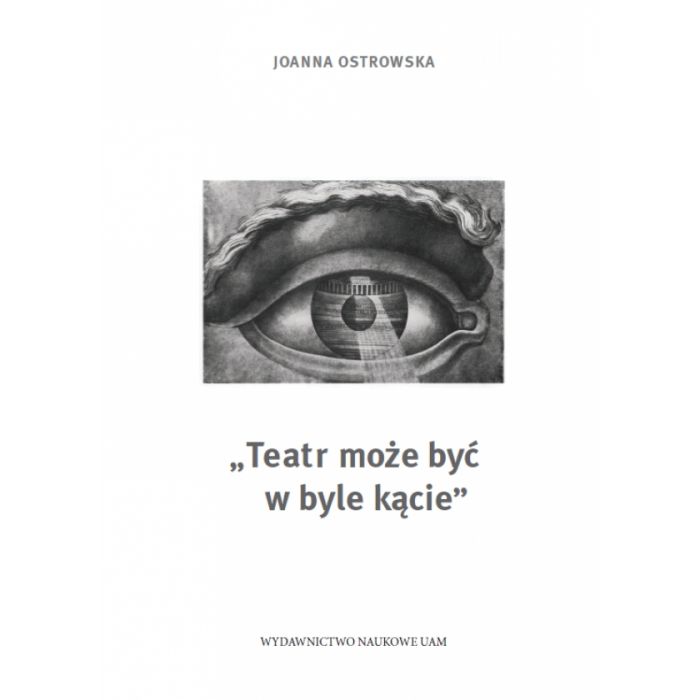„Teatr może być w byle kącie”. Wokół zagadnień miejsca i przestrzeni w teatrze
- In Stock: in stock
- ISBN: 978-83-232-2656-7
- Category: OUTLET, Culture Studies
- Year of publication: 2014
Naczelnym tematem w niniejszej pracy jest zagadnienie, czy współczesny teatr eksperymentalny ma szansę wykształcić własne miejsce teatralne (analogiczne do budynku tradycyjnego teatru) i czym jest współczesna przestrzeń performatywna. Głównym zagadnieniem nie jest w niej nietradycyjne używanie budynku teatralnego, lecz analiza przestrzeni teatralnej jako wyprodukowanej przestrzeni społecznej. Dlatego też w pierwszej części analizowane są przemiany miejsca i przestrzeni teatralnej jako wyraz społecznej morfologii. Odwołując się do rozpoznań Henriego Lefebvre'a autorka przedstawia w jaki sposób przestrzeń i miejsce teatru są wynikiem społecznej produkcji przestrzeni. W drugiej natomiast przedstawia polskich twórców, którzy eksperymentowali z całą materią teatru, gdzie eksperyment z przestrzenią był jedynie częścią eksperymentu oraz tymi, którzy wykorzystywali w swoich eksperymentach teatralnych miejsca inne niż tradycyjne teatry; miejsca, z jakich korzystały polskie eksperymentalne teatry oraz jakie produkowały w nich przestrzenie. Pytaniem postawionym w niniejszej pracy jest, jak i czy przez swoją praktykę omawiani artyści i grupy przezwyciężyli kartezjański prymat wizualności teatralnej oraz w jaki sposób świadomość kontekstu własnych miejsc teatralnych wpłynęła na ich praktykę.
This monograph mostly focuses on the topic of whether contemporary experimental theater has a chance of developing its own place (which would be analogous to a traditional theater building) as well as of what contemporary performative space is. It does not mainly deal with the possibility of using a theater building in a non-traditional way, but it rather analyzes theatrical space as socially produced space. Therefore, in the first part of the monograph the transformations of a theatrical place and space are analyzed as a manifestation of social morphology. By referring to Henri Lefebvre's ideas, the author presents the way in which theatrical space and place for theater are a result of the social production of space. The second part of this monograph presents Polish artists who experimented with all matters related to the theater and whose experiment with space was only a part of a larger experiment as well as those who examined places other than traditional theaters while carrying out theatrical experiments, i.e. places used by Polish experimental theaters and the spaces produced within such theaters. The basic question addressed in this monograph is how, and whether, the analyzed artists and groups of artists managed to overcome the Cartesian primacy of visuality in the theater as well as how the awareness of the context in which their own theaters, understood as places, were situated influenced their practices.
| Detailed information | |
|---|---|
| Spis treści |
Download file

|
| Wstęp |
Download file

|
|
|
|
| Publication Version | printed |
| Format | 17,0 x 24,0 |
| Title (EN) | "Theater Can Be Anywhere": On the Concepts of Place and Space in the Theater |
| Type of publication | Monografia |
| Edition | I |
| Series | Kulturoznawstwo nr 22 |
| ISSN | 1733-9103 |
| ISBN | 978-83-232-2656-7 |
| Number of pages | 328 |
| Type of binding | paperback |
